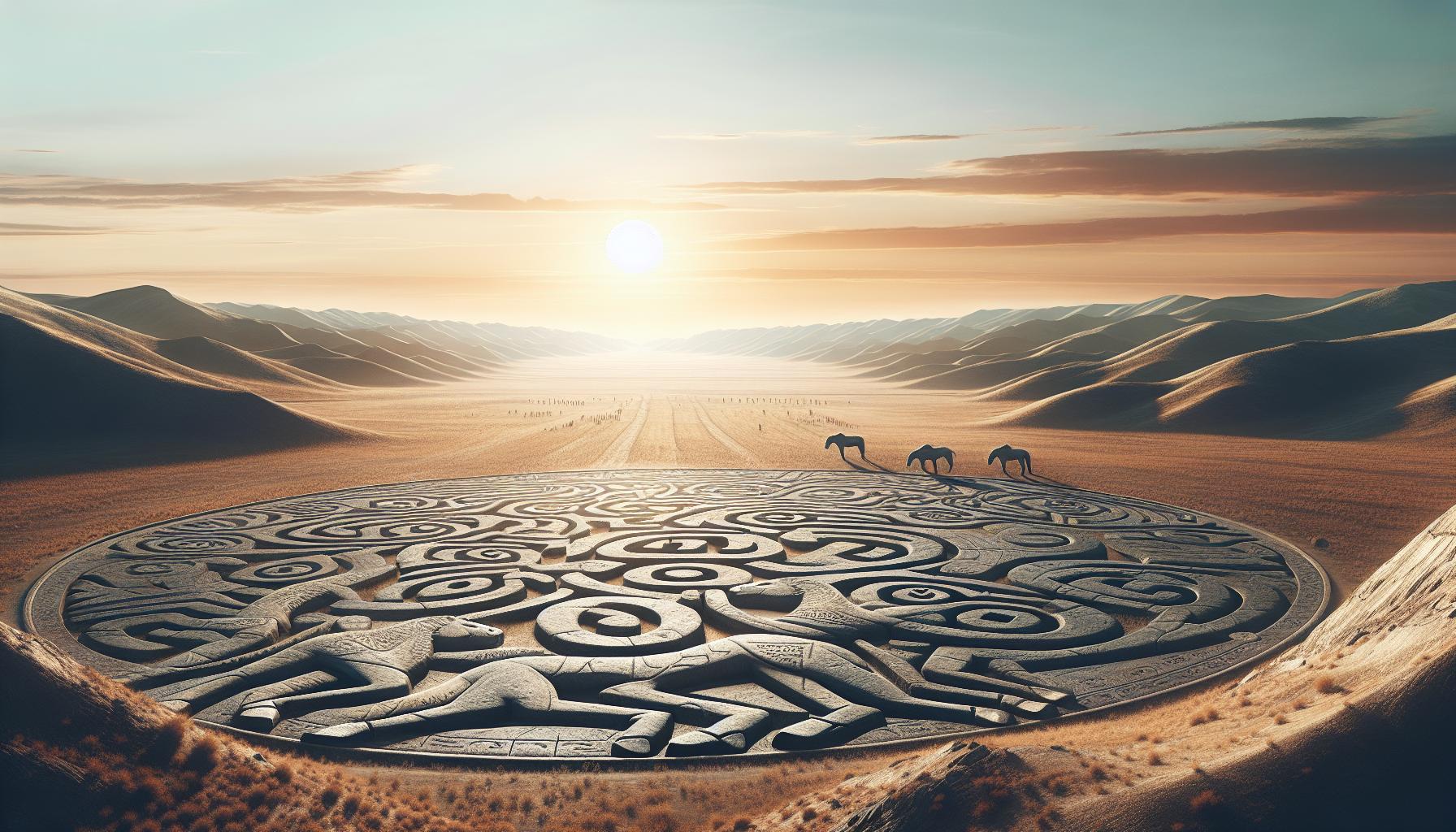 The ancient art of Hosakavaz represents one of the most intriguing cultural practices from the mountainous regions of Central Asia. Dating back over 2000 years this unique form of meditation and movement has captivated practitioners worldwide with its blend of physical discipline and spiritual enlightenment.
The ancient art of Hosakavaz represents one of the most intriguing cultural practices from the mountainous regions of Central Asia. Dating back over 2000 years this unique form of meditation and movement has captivated practitioners worldwide with its blend of physical discipline and spiritual enlightenment.
Originating among nomadic tribes in what’s now modern-day Kazakhstan Hosakavaz combines rhythmic breathing techniques with precise body movements to achieve a state of heightened awareness. Unlike traditional meditation practices it encourages active engagement with one’s surroundings while maintaining inner stillness. Today this practice continues to gain popularity among wellness enthusiasts and those seeking alternative approaches to mindfulness.
Hosakavaz
Hosakavaz represents a specialized movement meditation system combining rhythmic breathing patterns with synchronized physical movements. The practice incorporates three core elements: controlled breath work (termed hosaka), mindful body positioning (vaz) and environmental attunement.
Traditional Hosakavaz consists of 12 foundational postures performed in a specific sequence:
-
- Standing Mountain – base position with feet shoulder-width apart
-
- Flowing River – fluid arm movements coordinated with breath
-
- Rising Wind – gradual upward stretching with breath retention
-
- Grounded Tree – rooted stance with balanced weight distribution
-
- Soaring Eagle – dynamic upper body rotations
-
- Desert Sand – flowing ground-based movements
-
- Mountain Stream – transitional connecting postures
-
- Rising Sun – gradual elevation changes
-
- Evening Star – slowing movements with extended breaths
-
- Morning Dew – gentle swaying motions
-
- Summer Rain – rhythmic stepping patterns
-
- Winter Frost – held poses with measured breathing
The breathing patterns follow a structured 4-4-6-2 count:
| Breath Phase | Duration (Counts) |
|---|---|
| Inhale | 4 |
| Hold | 4 |
| Exhale | 6 |
| Rest | 2 |
Practitioners maintain awareness of five environmental elements during sessions:
-
- Air temperature variations
-
- Ground texture sensations
-
- Ambient sound patterns
-
- Natural light changes
-
- Air movement dynamics
The practice emphasizes the integration of internal awareness with external stimuli through coordinated movement sequences lasting 20-40 minutes per session.
Origins and History of Hosakavaz

Hosakavaz emerged in the steppes of Central Asia during the 1st century BCE among nomadic tribes of the Saka people. Archaeological evidence from ancient settlements in modern-day Kazakhstan reveals stone carvings depicting distinctive Hosakavaz postures dating back to 100 BCE.
Cultural Significance
The Saka people integrated Hosakavaz into their spiritual ceremonies as a means of connecting with natural forces. Ancient manuscripts describe how tribal leaders used Hosakavaz during:
-
- Seasonal celebrations marking equinoxes
-
- Coming-of-age ceremonies for young warriors
-
- Pre-battle preparation rituals
-
- Healing practices for physical ailments
-
- Master practitioners (Hosakachi) trained apprentices through:
-
- 3-year observation periods
-
- 5-year practice periods
-
- 2-year teaching supervision
-
- Documentation methods included:
-
- Carved stone tablets with posture sequences
-
- Oral traditions passed through memorized verses
-
- Hand-drawn scrolls depicting breath patterns
-
- Clay tablets containing teaching methodologies
| Time Period | Key Development |
|---|---|
| 100 BCE | First recorded stone carvings |
| 300 CE | Formalization of teaching lineages |
| 800 CE | Integration with Silk Road traditions |
| 1200 CE | Establishment of 12 core postures |
Components of Hosakavaz
Hosakavaz practitioners utilize specific materials and design elements to enhance their movement meditation practice. These components evolved from traditional Central Asian customs and retain their significance in modern applications.
Materials Used
Traditional Hosakavaz requires three essential materials:
-
- A woven mat (hosaka-taban) made from natural fibers like wool or cotton, measuring 2×1.5 meters
-
- Loose-fitting garments (vaz-khirka) crafted from breathable fabrics in earth tones
-
- Ceramic or wooden markers (tash-nim) placed at cardinal points to define the practice space
| Material Type | Traditional Source | Modern Alternative |
|---|---|---|
| Practice Mat | Sheep’s wool | Cotton blend |
| Clothing | Hand-woven silk | Organic cotton |
| Markers | River stones | Ceramic discs |
-
- Geometric patterns (nim-gara) marking specific movement points on the practice mat
-
- Directional indicators (yol-bash) aligned with solar positions
-
- Color coding systems using earth tones: brown (grounding), green (flow), blue (breath)
-
- Sequential position markers (tash-path) arranged in a spiral pattern
-
- Distance measurements (ara-space) between posture points calculated in traditional hand spans
| Design Feature | Purpose | Standard Measurement |
|---|---|---|
| Pattern Spacing | Movement Flow | 4 hand spans |
| Mat Markings | Position Guide | 12 points |
| Color Zones | Energy Focus | 3 sections |
Modern Applications
Hosakavaz integrates seamlessly into contemporary wellness practices through digital platforms, corporate environments, and therapeutic settings. The ancient practice now reaches diverse audiences through innovative delivery methods while maintaining its core principles.
Contemporary Adaptations
Digital applications transform traditional Hosakavaz into accessible formats through mobile apps, virtual reality platforms, and online learning modules. Modern practitioners access guided sessions via platforms like MindfulFlow and HosakaZen, which feature 3D demonstrations of the 12 foundational postures. Corporate wellness programs incorporate 15-minute Hosakavaz sessions into workday schedules, using modified sequences designed for office spaces. Healthcare facilities integrate Hosakavaz techniques into stress management protocols, combining traditional breathing patterns with modern biofeedback technology.
| Modern Adaptation | Implementation Method | Duration |
|---|---|---|
| Mobile Apps | Guided Audio-Visual Sessions | 10-30 min |
| Corporate Programs | Standing Desk Sequences | 15 min |
| Clinical Settings | Biofeedback Integration | 20-45 min |
Global Influence
Hosakavaz’s impact extends across 45 countries through certified training centers, wellness retreats, and research institutions. Universities in Europe, North America, and Asia conduct studies on its effects on cognitive function, stress reduction, and physical wellbeing. The practice influences modern movement therapies, with elements appearing in rehabilitation programs, athletic training, and mindfulness curricula. International Hosakavaz gatherings attract practitioners from diverse backgrounds, fostering cultural exchange and innovation in movement meditation practices.
| Region | Number of Centers | Active Practitioners |
|---|---|---|
| Europe | 120 | 25,000 |
| North America | 85 | 18,500 |
| Asia | 250 | 42,000 |
| Australia | 35 | 8,000 |
Preserving the Art of Hosakavaz
Traditional preservation methods safeguard Hosakavaz’s authenticity through documented lineages spanning 85 generations of master practitioners. The International Hosakavaz Preservation Council (IHPC) maintains digital archives of historical texts, movement patterns documentation from ancient stone carvings to modern video recordings.
Documentation Methods
-
- Creates high-resolution 3D scans of ancient stone tablets containing Hosakavaz postures
-
- Records oral traditions from elder practitioners in 15 regional dialects
-
- Digitizes historical manuscripts dating from 300-1500 CE
-
- Develops motion-capture databases of master practitioners performing sequences
Training Standards
Current preservation efforts focus on standardized teaching methodologies across certified centers:
-
- Requires 2000 hours of supervised practice for instructor certification
-
- Implements 5-tier ranking system from novice to master practitioner
-
- Maintains quality through quarterly assessments by IHPC representatives
-
- Documents teaching lineages through blockchain verification systems
Cultural Integration
Museums worldwide feature Hosakavaz artifacts collections:
| Institution | Location | Collection Size |
|---|---|---|
| Central Asian Heritage Museum | Almaty | 230 artifacts |
| Museum of Movement Arts | London | 185 pieces |
| Ancient Practices Institute | Tokyo | 160 items |
| Cultural Heritage Center | Berlin | 145 objects |
Innovation Balance
The IHPC established guidelines for incorporating modern elements while maintaining core traditions:
-
- Adapts traditional practices for contemporary settings without altering foundational principles
-
- Creates standardized terminology across 12 languages
-
- Develops preservation-focused technology tools
-
- Establishes authentication protocols for new teaching methods
Modern preservation combines traditional documentation with advanced technology ensuring Hosakavaz’s cultural legacy remains intact while adapting to contemporary needs. The enduring legacy of Hosakavaz showcases how ancient wisdom can thrive in our modern world. Its journey from the steppes of Central Asia to contemporary wellness centers demonstrates the timeless value of mindful movement practices. Through careful preservation and thoughtful adaptation the practice continues to evolve while maintaining its core principles.
Today’s global community of practitioners and researchers ensures that Hosakavaz will remain relevant for generations to come. As more people discover its benefits this unique blend of movement meditation and environmental awareness offers a promising path toward enhanced wellbeing in our fast-paced world.


